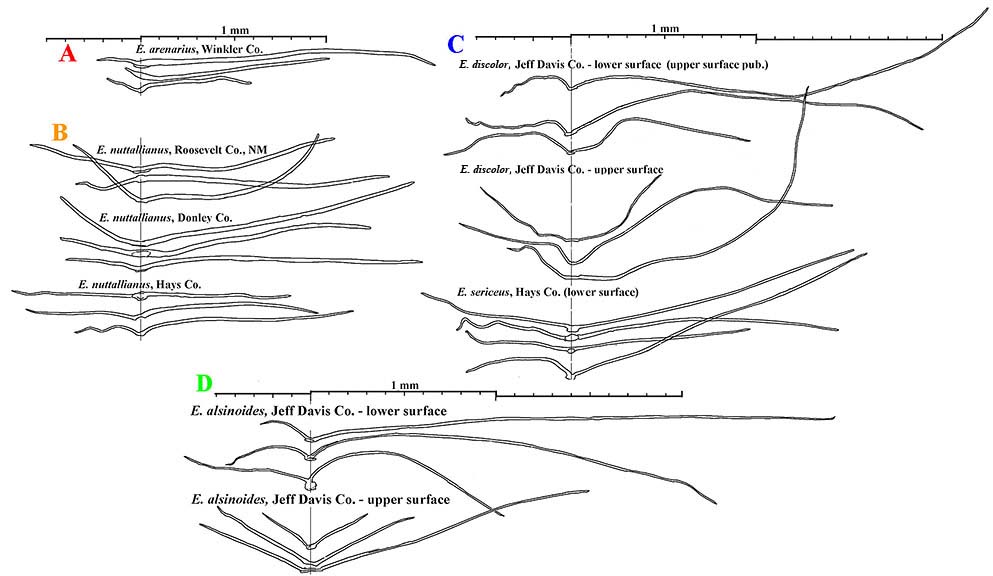
Fig. 1. Typical Evolvulus Trichome types: A: E. arenarius; B: E. nuttallianus; C: E. discolor & E. sericeus; D: E. alsinoides. Vertical line indicates point of attachment. See also Figs. 2 & 3 below.
[Click section to enlarge]

Evolvulus trichomes are bifurcate, most commonly asymmetrically, with a 'weak' branch and a 'strong' branch. The strong branch is often longer (cf. Fig. 1 above), directed toward the leaf tip, and with E. arenarius &E. nuttallianus regularly thicker than the weak branch at the base (cf. Figs. 2, 3). The weak branch is often significantly reduced. Each branch is widest at the base and gradually reduced to an acuminate tip. The density of hairs may differ on the two leaf surfaces. Of the 4 taxa discussed here only E. arenarius has greater density on the upper surface. The longest trichomes were found on the lower surface of E. discolor &E. alsinoides.
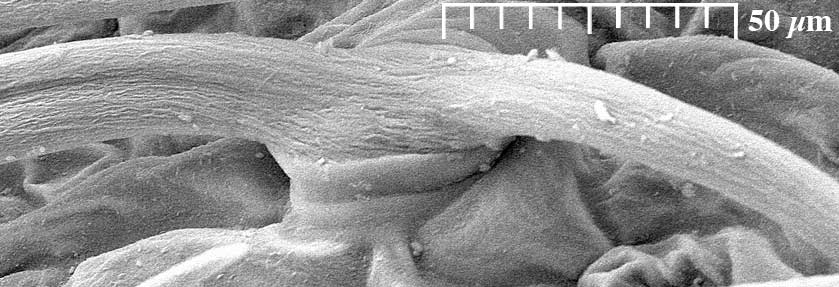

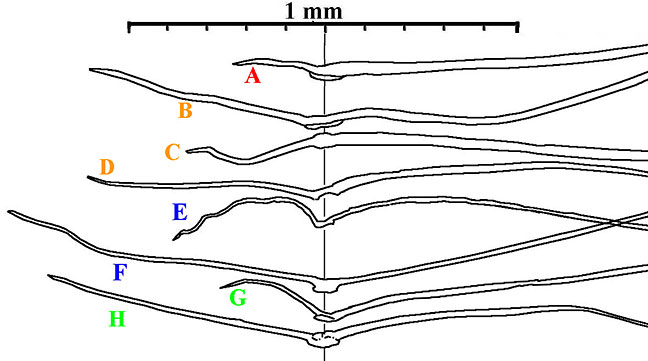
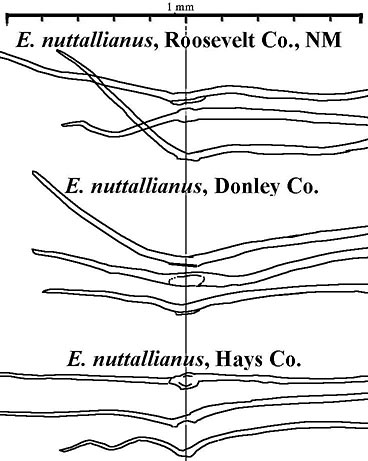
|
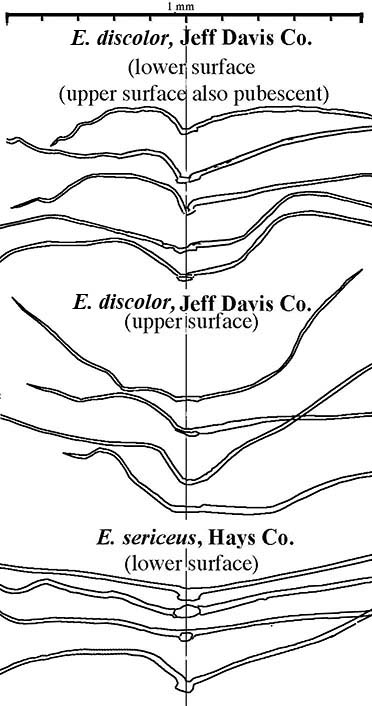
|
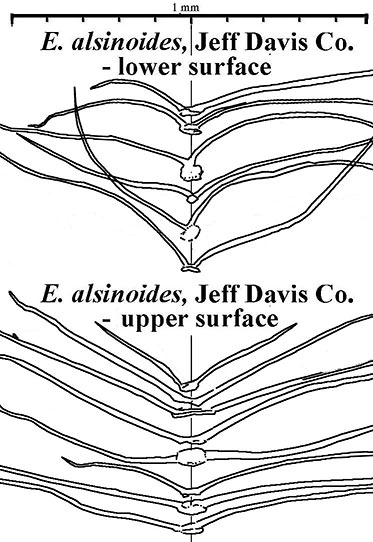
|
|---|